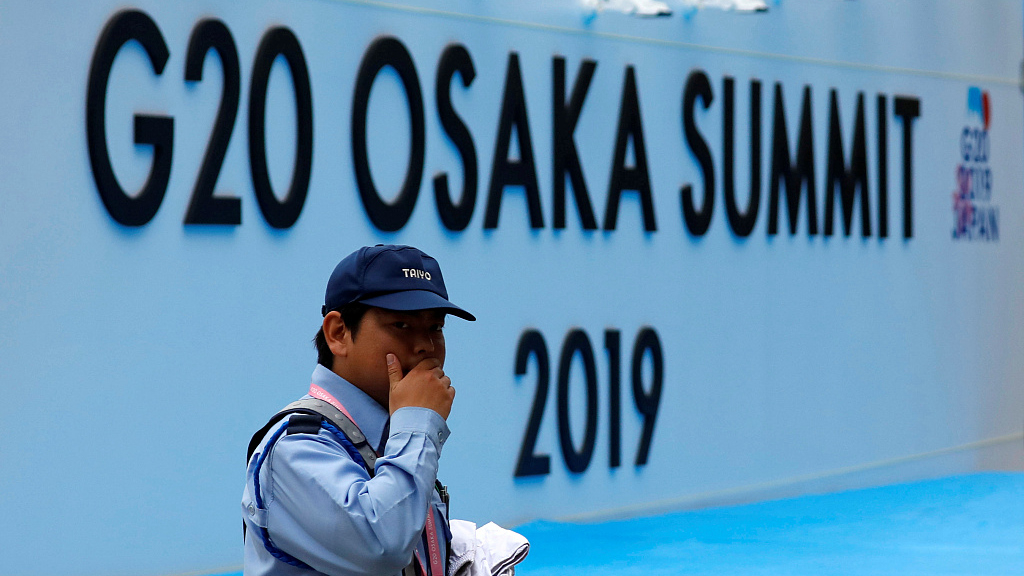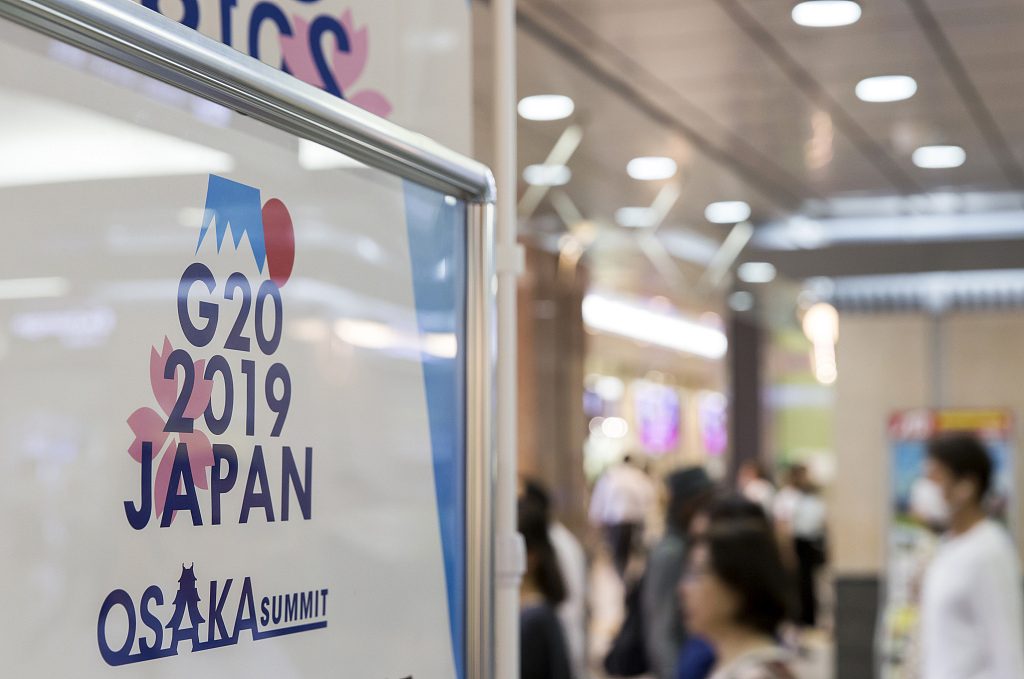

Editor's note:Dr. Ji Xianbai is a research fellow at the S. Rajaratnam School of International Studies, Nanyang Technological University, Singapore. He is also Associate Fellow at EU Centre in Singapore. The article reflects the author's opinions and not necessarily the views of CGTN.
On June 28 to 29, leaders of countries representing two-thirds of the world population and 85 percent of the global economic output assembled in Osaka, Japan, for the 2019 G20 Summit.
Trade was the dominant issue for leaders. Qualified mainly as a success, the Osaka summit's trade agenda was more precisely a mix of relief, excitement and disappointment.
Relief: China-U.S. trade truce
The summit was held during a trade war between the United States and China. The consequence of unabated trade conflicts between the world's two largest economies was dire, potentially costing the world 455 billion U.S. dollars in 2020.
To the relief of the world, the rising tensions between the two largest economies have been paused as the U.S. promised to withhold tariffs on an additional 300 billion U.S. dollars' worth of Chinese goods and allow American companies to sell products to China's Huawei, and as a quid pro quo, China agreed to purchase more U.S. farm goods. Concessions on both sides will see the halted trade talks resume shortly.
Whether the Osaka truce will last is an open question. But it is a positive development that the U.S. and China are still trying to manage their trade disputes relatively peacefully. And the urgency to end the trade battle on the part of the U.S. is more intense this time around.

An A.P Moller-Maersk A/S container ship is docked next to gantry cranes at the Yangshan Deepwater Port, Shanghai, China, May 10, 2019. /VCG Photo
The U.S. manufacturing Purchasing Managers' Index dived to 50.1 for June, the worst level since 2009. Private spending on capital goods also declined steadily as corporate leaders brace themselves for uncertainties ahead. Perhaps no better time exists to reach a compromise to pull the U.S. out of its economic downturns than now.
Excitement: EU-Mercosur FTA
Compared to the likely temporary China-U.S. truce, the moment of excitement for trade was when European Commission President Jean-Claude Juncker, clustered around by nine other leaders, announced the conclusion of the free trade agreement (FTA) negotiations between the European Union (EU) and the Mercosur bloc of Argentina, Brazil, Paraguay and Uruguay.
The 'historic' FTA has been in the making for exactly two decades and upon ratification would be the world's largest region-to-region trade and investment liberalization pact of more than 760 million people.
In addition, that the deal was announced on the sideline of G20 summit clouded by trade protectionism is noteworthy. In fact, it was not the first time that the EU expressed its political support for free trade in a G20 summitry setting.
Back in 2017, the EU and Japan inked an outline Japan-EU Economic Partnership Agreement on the eve of G20 Hamburg summit in a bid to send a joint message in favor of liberal trading order to the then-newly inaugurated Trump presidency.
After Osaka, the EU did it once again in Hanoi where the EU and Vietnam signed the trade and investment agreements on June 30. The ambitious agreements will eliminate 99 percent of all customs duties and protect investment through an investment court system.

A sign for the G-20 Summit is displayed at a train station in Osaka, Japan, A sign for the G-20 Summit is displayed at a train station on June 26, 2019 in Osaka, Japan. /VCG Photo
More such high standard trade agreements should be encouraged at the G20 and beyond. After all, in an era of trade conflicts, it is those deals, along with the China-led Regional Comprehensive and Economic Partnership under negotiation and the Japan-backed Comprehensive and Progressive Agreement for Trans-Pacific Partnership, that will safeguard an open and rules-based international trading order.
Flaw: WTO reform
For all the comfort one takes in China-U.S. détente and new trade deals, Osaka was deeply disappointing when it comes to pushing through the World Trade Organization (WTO) reform.
True, in the final leaders’ declaration, there were passing references to the need of reforming the WTO’s dispute settlement mechanism, making FTAs WTO-consistent and ensuring a level playing field in an enabling business environment – but no actionable plan was presented at the end of the day partly because of diverging ideas tabled by key G20 members.
The U.S. wanted to see the WTO countries that are eligible for ‘special and differential treatment’ in future trade talks, excluding all G20 members. China proposed to save the moribund dispute settlement mechanism by extending the terms of office for the judges.
The EU and Canada aimed to write new global rules to enhance trade policy transparency and curb trade-distorting measures such as excessive subsidies.
As leaders talked past each other at Osaka, the grouping’s divides over the direction of WTO reform remain essentially unbridged. Given the special power responsibilities of all G20 members, cooperative efforts must continue post-Osaka to narrow differences and collectively revitalize the 25-year-old institution.
(If you want to contribute and have specific expertise, please contact us at opinions@cgtn.com.)

Copyright © 2018 CGTN. Beijing ICP prepared NO.16065310-3
Copyright © 2018 CGTN. Beijing ICP prepared NO.16065310-3